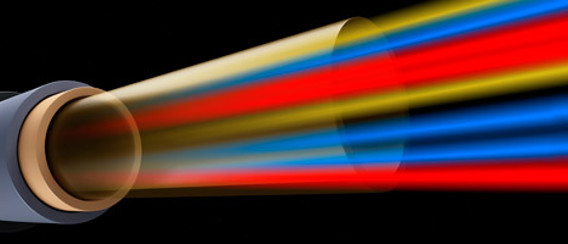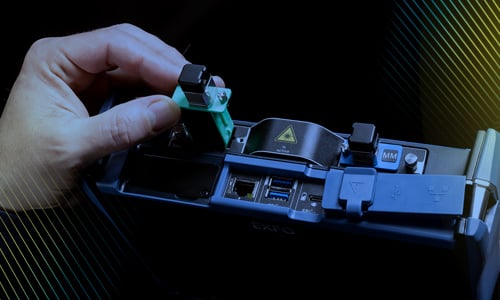CD Testing: A New Critical Role in Raman-Based Coherent Systems
To meet the ongoing demand for increased bandwidth, system vendors are introducing higher bits-per-symbol modulation formats, such as DP-QPSK (aka coherent detection systems). While such systems allow the information to be retrieved despite common fiber impairments (namely, chromatic and polarization-mode dispersion), they are not immune to them. And since they are often deployed on much longer routes, coherent systems require extra amplification, making OSNR a major limitation and Raman amplification very popular.
Since Raman technology uses the transmission fiber as the amplifying medium, core size is a factor in the gain that is created. A successful Raman design should therefore include the effective area of the fiber, which can be determined by identifying the fiber type (SMF-28 (G.652), LEAF, True Wave, etc.), as a given pump power yields varying gain depending on the effective area. In brown-field installations, which typically use legacy fiber that has been laid out and handled by many technicians from many operator companies, such fiber-type identification may not be readily available.
We looked into this challenge and we identified a new critical role for chromatic dispersion (CD) testing in Raman-based coherent detection systems. Indeed, the CD test provides data that can help identify the fiber type, therefore saving days of work, shortening time-to-revenue and significantly decreasing operating expenses (OPEX).
In addition to CD, a single-ended CD analyzers can measure the total chromatic dispersion as a function of distance (therefore the CD Coefficient), as well as the CD slope, and the lambda zero (the wavelength at which no dispersion occurs). These three data elements—CD coefficient, CD slope and lambda zero—constitute the fiber type signature, leading to fiber-type identification.
If you’re interested in learning more about this new test application, you can read the Chromatic Dispersion Testing in Coherent Systems white paper. You may also like this Lightwave Online article by Stephen Hardy.




